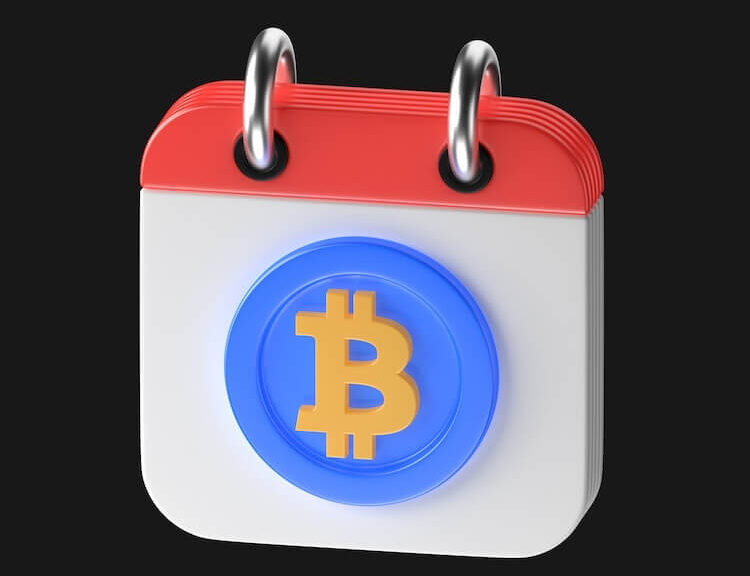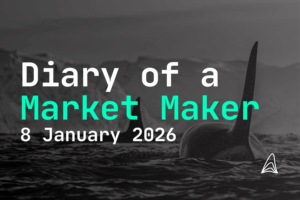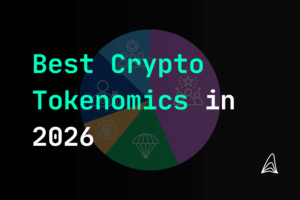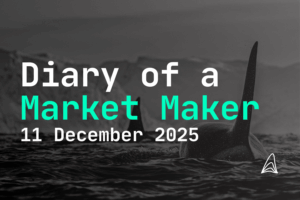Most vesting periods last between 2 to 4 years. They can include an initial cliff period, followed by gradual or milestone-based token releases.
- Jakob Brezigar
- Last updated: 1. October 2024
- Reading time: 5 min
How to Set Token Vesting Periods
The world of cryptocurrencies is an exciting yet highly volatile space, where success often hinges on careful planning and strategic execution. One of the most critical decisions for any crypto project is how to set token vesting periods. Establishing a well-thought-out token vesting schedule can safeguard the project from sudden market fluctuations, build trust with investors, and help align the goals of the team with long-term project success. In this article, we’ll explore what vesting periods are, why they’re important, and how you can set token vesting periods that ensure your token’s success while avoiding common pitfalls.

Table of Contents
What is a token vesting period?
A token vesting period is the timeframe during which tokens are locked and cannot be sold or transferred. It ensures long-term commitment from stakeholders and prevents sudden market dumps that can destabilize the token’s value.
Why are vesting periods important in crypto?
Vesting periods stabilize token prices, prevent early investors or team members from selling large amounts of tokens, and build trust with investors.
Key Takeaways - Set Token Vesting Periods
- A token vesting period locks tokens for a set time, ensuring long-term commitment from stakeholders.
- Vesting schedules prevent market dumping by gradually releasing tokens, protecting the token’s price from sudden drops.
- Team members typically follow longer vesting periods, while investors may prefer shorter, more liquid schedules.
- Hybrid vesting models combine time-based and milestone-based releases, balancing liquidity and project milestones effectively.
- Clear communication about vesting terms builds trust with the community and promotes long-term project success.
What is a Vesting Period in Crypto?
In crypto, a vesting period refers to the time during which tokens are locked up, preventing the holder from selling or transferring them. Unlike traditional markets, where equity or options vest over a set period, crypto vesting typically involves a release schedule that is either time-based or milestone-based. Essentially, the token holder does not have full control over their tokens until the vesting period is complete. This ensures that key stakeholders — whether they are team members, advisors, or investors — remain committed to the project over a specified period of time, helping to maintain stability.
Time-based vesting is the most common, where tokens are released over a predetermined time, such as monthly or quarterly. Milestone-based vesting, by contrast, ties token releases to specific achievements within the project, like hitting a particular development phase or securing a partnership. Both methods are popular, but the choice depends largely on the goals and trajectory of the project. Crypto vesting schedules can also be hybrid, combining both approaches, and it’s essential to understand the dynamics behind each to make the right choice.

Why is a Vesting Period Important for Your Token?
Vesting periods do more than just stagger the release of tokens — they play a pivotal role in maintaining the crypto market‘s stability and trust. Imagine what would happen if all tokens were distributed immediately: early investors or team members might sell them at the first opportunity, causing a price crash and signaling a lack of confidence in the project. A well-designed vesting period mitigates this risk by locking up tokens and releasing them gradually, ensuring that stakeholders are incentivized to stay involved in the long-term success of the project.
If you do not set token vesting periods, you risk creating a scenario where token holders flood the market, driving down the token’s price. This can cause panic among other investors, potentially creating a domino effect that damages your token’s reputation and liquidity. A strategic vesting period, on the other hand, helps to stabilize the token’s value and instills confidence in new investors. The longer the vesting period, the more likely it is that the project will grow in value, benefiting all stakeholders.
Building Long-Term Trust with Investors
For any crypto project, one of the primary goals is to foster long-term trust with its investors. Token vesting acts as a promise that the project is serious about its long-term prospects. Much like a farmer planting seeds and nurturing the crops, the vesting period nurtures the relationship between the project and its investors. By implementing a vesting period, you’re signaling to your investors that you’re not interested in quick gains but are committed to the ongoing success of the project.
This long-term commitment is a key driver of investor confidence. After all, an investor is more likely to trust a project that restricts token access for founders and team members, knowing that they, too, are invested in the project’s future. When investors see that the team behind the project is also on a vesting schedule, it reassures them that their interests are aligned. This transparency and alignment make it easier to build strong relationships with institutional investors, partners, and retail buyers alike.

Preventing Market Dumping
One of the most significant risks a new token faces is the threat of market dumping. Market dumping occurs when early investors or team members sell off large portions of their tokens all at once, causing the token price to plummet. This scenario can cripple a project’s chances of success by eroding investor confidence and driving away potential buyers. A well-structured vesting period can protect your token from this kind of market manipulation by locking up tokens for a specified period, preventing mass sell-offs right after the token launch.
Cliff vesting, for example, is a common strategy used to prevent immediate market dumping. In this method, tokens are locked for a set period (the “cliff”), often six months to a year, after which a percentage of the tokens are released. Gradual vesting then follows, allowing for a controlled release of tokens. This staggered release minimizes the risk of significant price drops and helps maintain liquidity over time. For projects launching a crypto token, a cliff combined with gradual or linear vesting is often the most effective way to safeguard the token’s market value.
Key Factors to Consider When Setting a Vesting Period
Deciding on the right vesting period isn’t as simple as picking a date and locking up tokens and is just as important as the selection of a right market maker. It requires a deep understanding of your project’s objectives, the expectations of your investors, and the commitments of your team. There are several key factors to consider when crafting your vesting plan, and each one can have a significant impact on the success of your project.
Team and Advisor Allocation
Allocating tokens to the team and advisors is one of the most important aspects of a token vesting schedule. These stakeholders are integral to the project’s development and should be incentivized to stay committed. However, giving them access to all of their tokens upfront can backfire if they decide to cash out early, especially if the token price rises quickly. To avoid this, tokens allocated to team members and advisors should be subject to vesting periods that keep them locked into the project over several years.
A typical vesting schedule for team members might include a one-year cliff, after which tokens vest gradually over three to four years. This ensures that team members have a long-term stake in the project’s success. For advisors, a shorter vesting period may be more appropriate, depending on the level of involvement and the strategic importance of their role. Orcabay’s customized strategies can be particularly beneficial in this scenario, as their team actively monitors token distribution and adjusts strategies based on the project’s needs and market conditions. Their hands-on approach ensures that token allocation aligns with the project’s goals.

Investor Vesting vs. Founders’ Vesting
When you decide to set a token vesting period, it’s important to strike the right balance between the needs of investors and those of the founders. While investors may prefer shorter vesting periods to provide them with liquidity, founders are often better served by longer vesting periods that signal their commitment to the project. Founders with long vesting periods help instill confidence in the market, as it shows they are dedicated to the project’s long-term success and won’t abandon the token once it hits a certain price.
In contrast, investors — especially those who participate in early funding rounds — are typically looking for faster returns. Therefore, their vesting periods may need to be shorter or include provisions for partial liquidity. Hybrid vesting models, which combine both time-based and milestone-based releases, can be an effective compromise. They allow for periodic token releases while ensuring that the project reaches key milestones before fully unlocking tokens. Balancing these interests is essential for building trust and ensuring that both the founders and investors are satisfied with the vesting terms.
Other important factors to take into consideration include taxation and regulation.
Concluding Thoughts on How to Set Token Vesting Periods
In conclusion, a well-structured vesting period is crucial for maintaining stability, building investor trust, and preventing market dumping in crypto projects. By carefully balancing the needs of both founders and investors, you can ensure long-term success. For those looking to develop a tailored vesting strategy, Orcabay offers expert guidance and comprehensive market-making solutions to align your token’s distribution with your project’s goals.
Disclaimer: The information provided in this article is for informational purposes only and does not constitute financial, investment, or other professional advice. All opinions expressed herein are solely those of the author and do not represent the views or opinions of any entity with which the author may be associated. Investing in financial markets involves risk, including the potential loss of principal. Readers should perform their own research and consult with a licensed financial advisor before making any investment decisions. Past performance is not indicative of future results.

Jakob Brezigar
Jakob, an experienced specialist in the field of cryptocurrency market making, boasts an extensive international presence. With Orcabay, he has skillfully managed major operations and deals for a wide array of global stakeholders.




